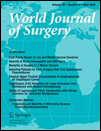Surgical Management of Chronic Wounds in a Buruli Ulcer Endemic Area in Central Africa
Abstract
Background
Chronic wounds, especially Buruli ulcers (BU) are emerging public health threat in West and Central Africa. Akonolinga in Cameroon is one of the four health districts affected by BU. Since 2002, Médécins Sans Frontières has established a specialized wound carecenter to actively diagnose and provide treatment of chronic wounds that is accessible and affordable for all patients. Our objectives were to report the surgical activities in Akonolinga, to provide description of the types of chronic wounds and elements of anticipation of treatment needs in a public health perspective.
Method
We carried out a retrospective cohort and descriptive study from January 2012 to June 2014 (30 months) on a series of consecutive patients with chronic wounds, managed surgically in Akonolinga, Centre Region, Cameroon. Among BU patients only those with necessity of surgery were included and the others followed only their 8 weeks medical treatment with antibiotics.
Results
A total of 148 patients were recorded. 101 cases of BU and related disability and 47 cases of non-Buruli chronic wounds. Patients had a mean age of 34 years. Most of the procedures used were debridement 40 %, skin graft 29 %, stripping 5 %, plastic procedures 7 %, and amputation 4 %. The mean number of procedures was 2 for each patient in this series.
Conclusion
Chronic wounds occur worldwide and may be caused by specific health conditions. Medical and paramedical education should provide both the theoretical knowledge and practical skills to help health care personnel to face this problem in their communities.




